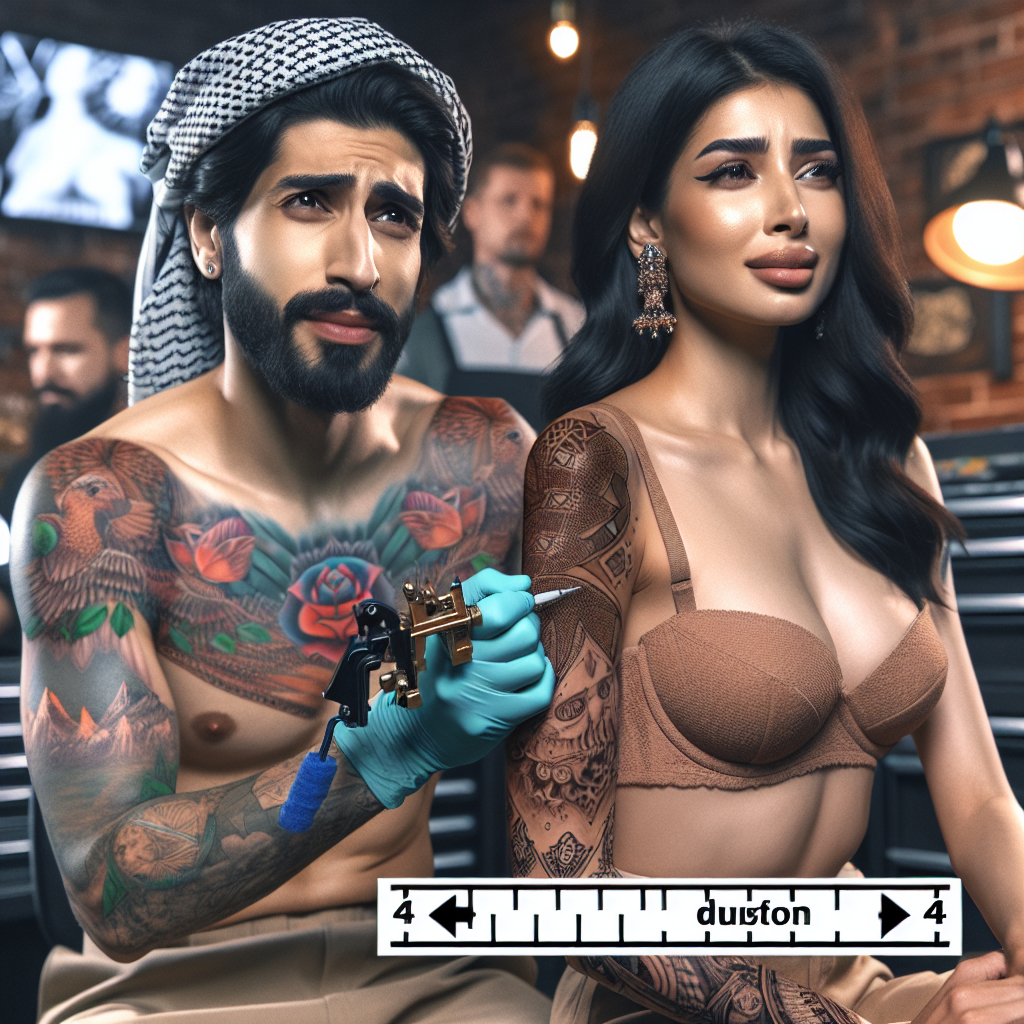
Get at least 6 FREE Stock Shares today
# Tattoo Pain Scale Explained: How to Manage Discomfort During Your Appointment
## Introduction
Tattoos have evolved from taboos to widely accepted forms of self-expression and art. They can symbolize meaningful events in our lives, reflect our inner selves, or simply serve as artistic decoration. However, one common concern that potential clients have is the pain associated with getting a tattoo. Understanding the tattoo pain scale and effective pain management strategies can enhance your experience. Beyond merely enduring discomfort, this knowledge can help illuminate the profound and positive impact a tattoo can have on your life.
## The Tattoo Pain Scale: Understanding the Levels
The pain associated with tattoos can vary widely based on several factors. The tattoo pain scale typically ranges from 1 (barely noticeable) to 10 (excruciating). Here is a breakdown of the scale:
1. **Level 1-3 (Low Pain)**: Areas with more flesh and muscle, like the outer arm or thigh, usually fall into this category. Pain levels are often described as minor discomfort or a sensation akin to a light scratch.
2. **Level 4-6 (Moderate Pain)**: Tattoos in these regions, such as the chest or side, may evoke more intense sensations. The discomfort is similar to a sunburn and can feel sharper.
3. **Level 7-9 (High Pain)**: Locations near bone, such as the spine, ribs, or knees, can bring forth significant discomfort. This level can be described as burning or stinging, often causing a person to squirm.
4. **Level 10 (Extreme Pain)**: Very few areas warrant this level. However, for those with extreme needle sensitivity, any location can feel unbearable.
Understanding the tattoo pain scale allows individuals to manage their expectations and prepares them for their experience.
## Factors Influencing Pain Levels
Several factors can affect pain levels during a tattoo session:
– **Location**: Highly sensitive areas like the ribs, spine, and ankles typically experience more discomfort than fleshy parts of the body.
– **Size and Complexity**: Larger and more intricate designs may take longer to complete, intensifying the sensation over time.
– **Individual Pain Tolerance**: Everyone has a unique threshold for pain, influenced by various factors like genetics, mood, and past experiences.
– **Tattoo Artist’s Technique**: An experienced and skilled tattoo artist can significantly reduce discomfort with their technique.
## Strategies for Pain Management During the Tattoo Process
Now that you understand the tattoo pain scale and influencing factors, it’s time to explore effective strategies to manage discomfort.
### 1. **Communicating with Your Artist**
Before your appointment, have an open discussion with your tattoo artist about your pain concerns. They can adjust their technique or approach based on your preferences.
### 2. **Mental Preparation**
Mindset plays a critical role in your pain experience. Practicing mindfulness or deep-breathing exercises can help you manage anxiety, allowing you to approach the session with a calm demeanor.
### 3. **Hydration and Nutrition**
Staying well-hydrated and eating a nutritious meal before your appointment can help your body withstand discomfort better. Avoid alcohol, as it can increase sensitivity to pain.
### 4. **Topical Numbing Creams**
Over-the-counter numbing creams can provide temporary relief if used as directed. Consult with your tattoo artist about their preferences regarding these products.
### 5. **Taking Breaks**
Don’t hesitate to request short breaks during your tattoo session. Pausing allows your body to relax and recover, making the experience more manageable.
### 6. **Distraction Techniques**
Engaging in activities like listening to music, watching a show, or even chatting with friends during your appointment can distract from the discomfort and enhance your overall experience.
## The Positive Impact of Tattoos on Your Life
While the temporary discomfort of getting a tattoo may seem daunting, the long-term benefits often outweigh the momentary pain. Tattoos can serve as powerful reminders of resilience, personal growth, or significant milestones.
### 1. **Self-Expression and Identity**
Each tattoo carries a unique story, helping express individuality and personal identity. Wearing your values, interests, or milestones on your skin can foster a sense of authenticity and confidence.
### 2. **Empowerment and Healing**
For many, tattoos mark transformative events such as personal loss, recovery from illness, or significant life changes. They offer a tangible way to honor past experiences, serving as reminders of strength and resilience.
### 3. **Community and Connection**
Tattoos can foster a sense of community amongst enthusiasts. Wearing similar designs or symbols can create instant connections, allowing individuals to bond over shared experiences and values.
### 4. **Artistic Appreciation**
Tattoos are forms of art that celebrate creativity. Beautifully crafted tattoos contribute to the melting pot of artistic expression, with each design evolving into a lifelong piece of the wearer’s narrative.
## Conclusion
Understanding the tattoo pain scale and employing effective pain management techniques can help ease the discomfort of tattooing. As you embrace the momentary discomfort, remember that the pain is transient, while the beautiful stories that tattoos tell can last a lifetime. With every tattoo you acquire, you carve out a piece of your identity, celebrating your past, present, and future. The positive impact of tattoos is significant, enriching your life through self-expression, healing, and connection with others. So, the next time you’re contemplating a tattoo, embrace the journey—pain and all—because the result can be transformative.
Explore more tips, tricks, and insights into tattoo culture right here at TattooImpact.com, where your journey into the world of tattoos begins!
Leave a Reply